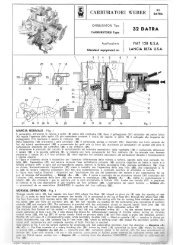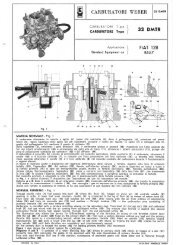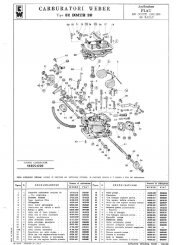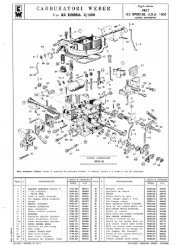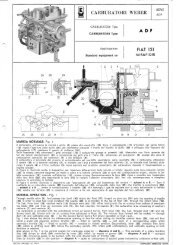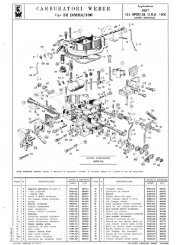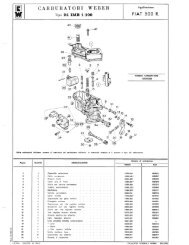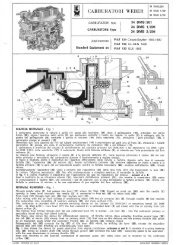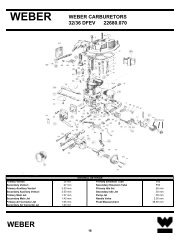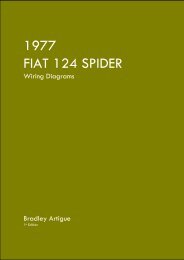Engine Maintenance and Modification Bradley Artigue
FIAT 124 Spider Engine Maintenance + Modification - Artigue.com
FIAT 124 Spider Engine Maintenance + Modification - Artigue.com
- No tags were found...
Create successful ePaper yourself
Turn your PDF publications into a flip-book with our unique Google optimized e-Paper software.
FIAT 124 Spider<br />
<strong>Engine</strong> <strong>Maintenance</strong> + <strong>Modification</strong><br />
does not remain running then increase the idle speed screw ½ turn until it does). Adjust<br />
the idle speed screw until the engine runs at approximately 900 RPM.<br />
Let the engine warm up to operational temperature. On a Spider you will typically wait<br />
until the fan has cycled two times (on-off-on-off). Turn the mixture screw in (lean the<br />
mixture). If the engine increases in speed then continue to turn until it is no longer<br />
increasing or runs worse, then back the screw out ½ turn. If the engine decreases in<br />
speed then turn the screw out until it is increasing in speed. Continue to turn until it is<br />
no longer increasing or runs worse, then turn the screw in ½ turn. Adjust the idle to<br />
approximately 850 RPM.<br />
4.9.3 Final Settings<br />
Set the idle speed screw so that the engine runs at 850 RPM, or 900 RPM if you have air<br />
conditioning. Recheck the mixture screw by turning slightly in then out. <strong>Engine</strong> speed<br />
should be set - using the mixture screw ONLY - to the fastest <strong>and</strong> smoothest point of<br />
operation (listen for exhaust popping). Reset the idle speed screw as necessary.<br />
Drive the car under various loads (idle, cruise, hard acceleration, gradual acceleration,<br />
etc.) for a short period of time then remove one of the spark plugs. The electrode should<br />
be brownish-white in color. A white plug results from an engine that is too lean; a black<br />
plug from one that is too rich. Adjust the mixture screw slightly to compensate.<br />
4.10 Diagnostics <strong>and</strong> Troubleshooting<br />
4.10.1 Air Input Diagnostics<br />
The only source of air entering the engine should be through the carburetor barrels. Air<br />
entering the engine through a broken gasket or carburetor spacer can cause poor<br />
running. You can spray carburetor cleaner around the base of the carburetor; there<br />
should be no change in engine speed. Also check the tightness of the bolts holding the<br />
carburetor to the manifold, they should be tight (but not so tight you’re bending the base<br />
plate!).<br />
If you find that air is entering around the throttle assembly then you might have throttle<br />
rods <strong>and</strong> bushings that have worn themselves out. The carburetor will need to be rebuilt<br />
or replaced. Also inspect the carburetor body for any cracks or leaking fuel. Cracks can<br />
let in air <strong>and</strong> typically require the carburetor to be replaced.<br />
4.10.2 Mixture Problems<br />
If problems appear to be stemming from the fuel mixture there are a few areas to<br />
diagnose, all of which deal with the basic air/fuel mixture settings on the carburetor.<br />
Always too lean<br />
If the vehicle runs too lean, even with the mixture screw “all the way out” (meaning to<br />
the limit of reasonable travel, or about 4-5 turns) then you may have idling jets that are<br />
36



